There are so many software and applications for digitally drawing illustrations, and it’s easier than ever to get professional-level software if you have a device. We all are familiar with expensive ones like Photoshop and Corel Painter, as well as cheaper tools like ArtRage. Autodesk Sketchbook is a software similar to the prevailing digital art range and is totally worth using. Don’t be deceived by its name, it’s not just a sketchbook, it is a full-fledged art studio, equipped with a vast range of elaborate painting tools that comes free for all. In this blog, we take a look at the Autodesk Sketchbook application, its features, and what makes it so inimitable.
Autodesk Sketchbook, now free, is a raster graphics software application for expressive drawing & concept sketching. In simple words, Autodesk Sketchbook is a drawing and painting solution for creative people like architects, designers, and concept artists. It lets you create striking illustrations in minimal time and allows you to stay productive on all major platforms and devices.
This drawing app is available on multiple platforms including, desktop, Windows 10, and mobile. It looks a lot similar to Photoshop, but what sets it apart from others is its bigger focus on drawing, painting, and the ease of creating artwork swiftly. Also, unlike Photoshop this application is not aimed at image manipulation or photography; instead, it includes an extensive range of tools aimed at artists and designers.
How to use Autodesk Sketchbook
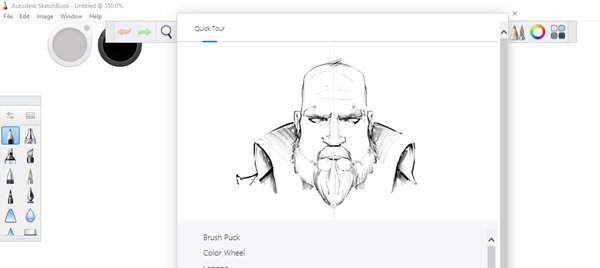
From drawing and line-work to textures, brushes, blending, and gradients this application integrates several features to create excellent art pieces.
Before you can start using it, download SketchBook from SketchBook’s official website or Microsoft Store. Install and launch SketchBook.
To start using SketchBook for free, you would need an Autodesk ID. You can hit the ‘Create Account button’ to create a free Autodesk ID and password. Once done, launch SketchBook and hit the Sign In button, and enter your Autodesk ID and password.
Here’s what Autodesk SketchBook can do:
- Supports multiple platforms and devices – SketchBook is available for both Windows and Mac OS and works on all of your devices with an Autodesk account.
- Simple interface – The very first thing that you would notice is the simple interface of the application. The neat, tidy, and intuitive interface makes drawing and painting more fun and enjoyable.
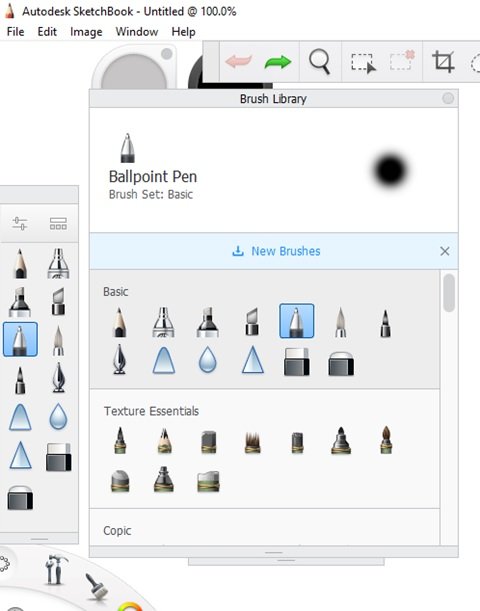
- Impressive brush library – SketchBook has over 140 brushes made by artists and designers to capture the precise stroke you’re looking for. Along with the pre-loaded ones, there are many more available for download from the ‘SketchBook Extras’ You can try the design pencil set, watercolor brushes, pastels, and markers that perform just as they do on paper.
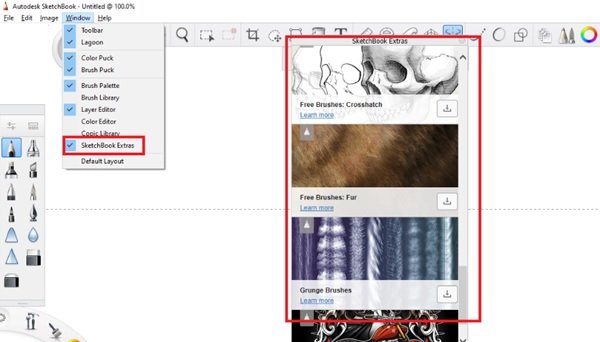
- Layers without limits & immense canvas size – On Windows 10, SketchBook features a 100-megapixel canvas size, this gives you the freedom to create large and incredibly detailed drawings. Also, it has no limit to the number of layers allowing you to easily group and rearrange different elements.
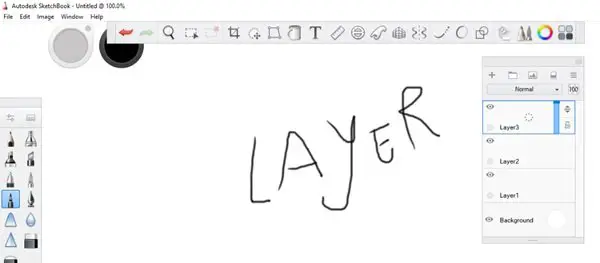
- Multiple drawing and painting modes – In addition to the basic “what you draw is what you get” default drawing mode, SketchBook includes many drawing and painting mode. You can enable Steady Stroke which allows you to gently drag the tooltip to smooth out your lines or the Predictive Stroke that can easily fix your mistakes once you’ve drawn them. Both these tools make a freehand drawing with a trackpad or mouse easier and a predictable experience.
- Perspective guides and symmetry tools – Perspective Guides are ideal for maintaining straight lines when drawing architecture or other true-to-life subjects; and, the symmetry tools let you create a mirror image of your drawings. You can also choose between horizontal and vertical symmetry.
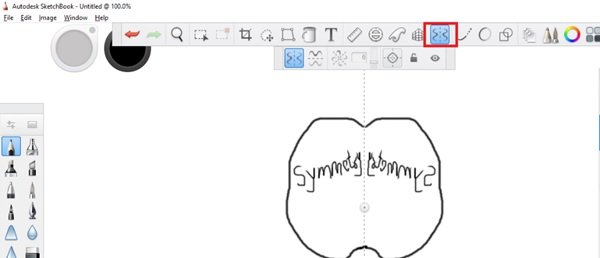
- Distort transform – This one is a powerful tool to have access to as it allows you to design elements of your image as it would appear to the naked eyes.
- Flipbook animation – One of the most impressive features of this tool is the flipbook mode. It lets you create short animations. In a single Flipbook, you can have up to 1000 frames, and make full use of layers to separate main subjects, moving elements, and static background elements.
- PSD support – SketchBook is PSD compatible on all devices and lets you export your work in different formats, including JPG, BMP, TIFF, PNG, and most importantly PSD. It completely preserves layered PSDs during import/export including groups, names, and blending models.
- SketchBook Support – Get in-depth tutorials that teach you how to use all of the striking tools.
Unquestionably, Autodesk Sketchbook is one specialized tool; with its notable tools range including rulers and guides, perspective guides, distort transform, brush blending, stroke stabilizer, easy gradients, and a distinct ‘Flipbook’ animation mode, we can say this set this application stands as one of the most creative and powerful drawing tools.
If you are creating large complicated pieces then you would need faster and powerful machines. Certain features like complex brushes, multiple layers, and blending modes, can crawl a bit on older systems.
Previously, Autodesk SketchBook relied on a subscription model, meaning when the trial period was over the user would need to pay a few dollars to be an active user.
Autodesk has made the full version of SketchBook free to all. And it is worth trying!
Unlike other popular graphics software that claims to cover almost everything, Autodesk SketchBook focuses mainly on drawing and sketches – and pays great attention to detail on its USP. Its user-friendly interface helps turn work into an enjoyable experience. And the more you practice, the better you get at it; since SketchBook is totally free, there no harm in trying it out for yourself.
Let us know what you think of Autodesk SketchBook in the comments section below.